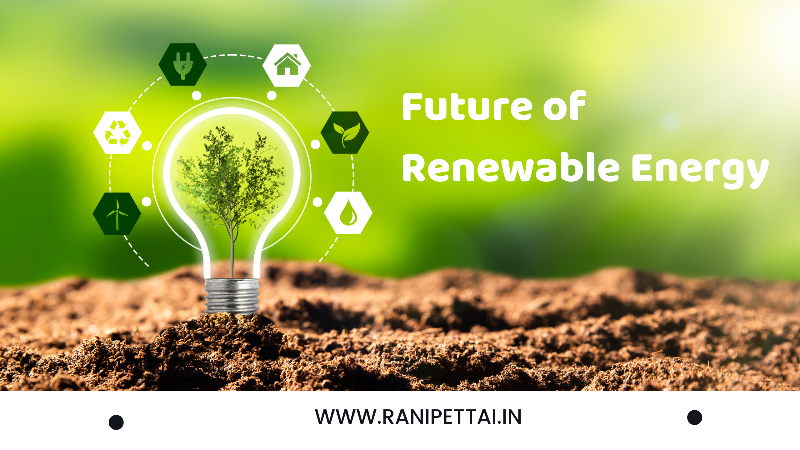Renewable energy is energy derived from natural resources that replenish themselves over time, such as wind, solar, hydro, and geothermal. Renewable energy has become increasingly important over the past few decades as the world tries to move away from fossil fuels and reduce carbon emissions. The future of renewable energy looks bright, with many experts predicting that it will become the dominant source of energy in the coming decades. In this blog post, we will explore the current state of renewable energy, the challenges it faces, and the potential it holds for the future.
The Current State of Renewable Energy
Renewable energy has come a long way over the past few decades. According to the International Energy Agency (IEA), renewable energy accounted for 29% of global electricity generation in 2020, up from 24% in 2014. Wind and solar power have been the biggest drivers of this growth, with wind power accounting for 53% of new renewable capacity additions in 2020, and solar power accounting for 43%.
The rapid growth of renewable energy has been driven by a number of factors. Firstly, the cost of renewable energy has fallen dramatically over the past decade. According to the IEA, the cost of solar photovoltaic (PV) modules fell by 90% between 2010 and 2020, while the cost of onshore wind turbines fell by 40%. This has made renewable energy much more competitive with fossil fuels, particularly in sunny and windy locations.
Secondly, governments around the world have implemented policies to support the growth of renewable energy. This has included subsidies for renewable energy projects, targets for renewable energy deployment, and carbon pricing schemes that make fossil fuels more expensive. These policies have helped to create a level playing field for renewable energy, making it more attractive to investors.
Finally, there has been a growing awareness of the environmental and social impacts of fossil fuels. This has led to a growing demand for renewable energy from consumers and businesses, as well as pressure on governments and corporations to transition to cleaner energy sources.
The Challenges Facing Renewable Energy
Despite the progress that has been made, renewable energy still faces a number of challenges that need to be addressed if it is to become the dominant source of energy in the coming decades. These challenges include:
Intermittency:
One of the biggest challenges facing renewable energy is intermittency. Unlike fossil fuels, which can be burned on demand, renewable energy sources such as wind and solar are dependent on weather conditions. This means that their output can vary significantly from day to day, or even hour to hour. This can create challenges for grid operators, who need to ensure that there is enough power available to meet demand at all times.
Energy storage:
To overcome the challenge of intermittency, renewable energy needs to be paired with energy storage technologies such as batteries, pumped hydro, or hydrogen storage. While these technologies are improving, they are still relatively expensive and not yet available at scale.
Infrastructure:
The growth of renewable energy also requires significant investment in infrastructure such as transmission lines, substations, and interconnections between grids. This can be challenging, particularly in remote or rural areas.
Policy uncertainty:
Renewable energy policies can change quickly, creating uncertainty for investors and developers. This can make it difficult to secure financing for renewable energy projects, particularly in emerging markets.
The Future of Renewable Energy
Despite these challenges, the future of renewable energy looks bright. Here are some of the reasons why:
Falling costs:
The cost of renewable energy continues to fall, making it increasingly competitive with fossil fuels. According to the IEA, solar PV is now the cheapest source of electricity in most parts of the world, and the cost of wind power is also falling rapidly.
Energy storage:
The development of energy storage technologies is also improving rapidly. Battery storage costs have fallen by around 85% since 2010, and are projected to continue falling in the coming years. Pumped hydro and hydrogen storage technologies are also improving, and could play an important role in supporting the growth of renewable energy in the future.
Innovation:
There is a great deal of innovation happening in the renewable energy sector, with new technologies and business models emerging all the time. For example, floating offshore wind turbines are being developed, which could significantly increase the amount of wind power that can be generated. In addition, new business models such as community solar and virtual power plants are emerging, which could make renewable energy more accessible to a wider range of consumers.
Government support:
Governments around the world are increasingly supporting the growth of renewable energy through policies such as renewable energy targets, subsidies, and carbon pricing schemes. This support is likely to continue, as governments seek to meet their climate goals and reduce their dependence on fossil fuels.
Public demand:
There is a growing demand for renewable energy from consumers and businesses, as people become more aware of the environmental and social impacts of fossil fuels. This demand is likely to continue to grow, as more people become aware of the benefits of renewable energy and the risks of climate change.
Conclusion
In conclusion, the future of renewable energy looks bright. While there are still challenges that need to be addressed, such as intermittency and energy storage, the falling cost of renewable energy and the support of governments and consumers suggest that renewable energy will become the dominant source of energy in the coming decades. This is good news for the planet, as renewable energy can help to reduce carbon emissions and mitigate the impacts of climate change.








